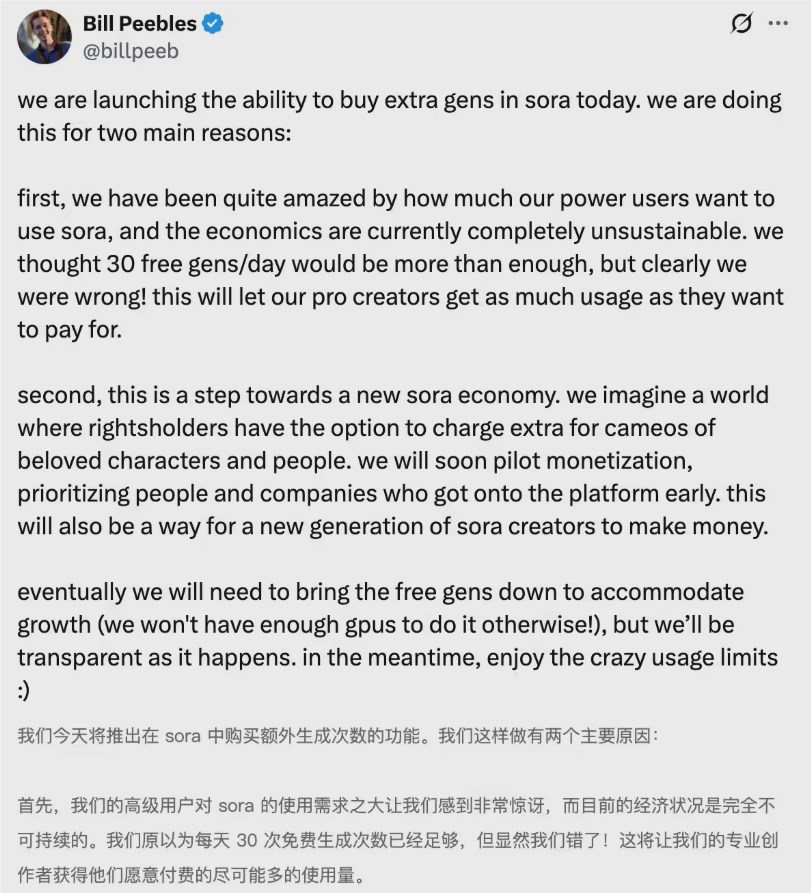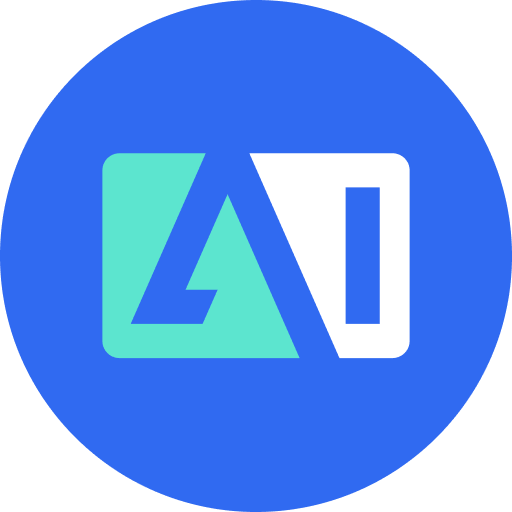Surging globally within a month of launch, OpenAI's AI video generation app Sora is now at a critical turning point. Faced with a surge in user demand and rising computational costs, project lead Bill Peebles recently announced on X that Sora's daily free generation quota of 30 will be gradually reduced, while paid options and a creator revenue-sharing plan will be introduced, marking the phenomenon-level product's official entry into the deep waters of commercialization.
Free Quota Reduction: An Inevitable Choice Amid GPU Resource Shortage
"If we don't take action, GPU resources will not be able to support such massive demand," Peebles admitted. Although Sora is still in an invite-only phase, it has already achieved over 2 million downloads in just the United States and Canada, with daily video generation requests far exceeding expectations. To ensure service stability and generation quality, OpenAI has decided to dynamically reduce the free quota—specific adjustment schedules will be transparently published based on system load.

$4 for 10 Uses: Heavy Users Can Instantly Expand Capacity
To meet the needs of frequent users such as creators and marketers, Sora has launched paid packages on the Apple App Store: users can pay $4 for 10 additional generation opportunities. This design avoids a "one-size-fits-all" approach that might affect light users, while offering professional creators a flexible expansion path, seen as a key measure to balance experience and cost.
Creator Economy Launch: Cameos Will Become Profitable
More strategically significant is OpenAI's preparation for copyright collaborations and a creator revenue-sharing mechanism. In the future, film studios, IP holders, or celebrities can authorize their characters or images for use in Sora's "Cameos" feature (i.e., AI digital avatars) and earn revenue from related video generation. Peebles revealed that the platform will prioritize early creators for this program, with the first pilot expected to launch within the year.
If successful, this model could transform Sora from a "tool platform" into a "content economy ecosystem"—where users generate videos, rights holders receive licensing fees, and OpenAI collects service charges, forming a new AI content value chain that benefits all three parties.
Commercialization ≠ Decline in Experience, Transparency Is the Key Commitment
Despite the reduction in free resources, OpenAI emphasized its commitment to transparency: all adjustments will be announced in advance, paid options will be completely voluntary, and basic features will remain accessible to regular users. In the current fiercely competitive landscape of AI video generation (with competitors like Runway, Pika, and Luma surrounding it), Sora is attempting to build a long-term moat through controlled commercialization and creator incentives.
As AI video moves from "technology demonstration" to "daily creation," this step by Sora may be the crucial leap that transforms it from a viral app into a sustainable platform. And each generation in the hands of users may, in the future, become part of the creator economy.
